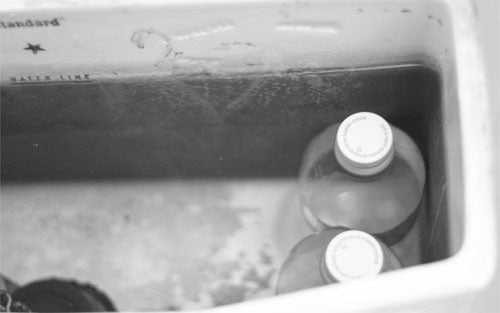Water is the most precious resource on Earth, and we all must do our part to conserve as much as possible to sustain our way of life. Much of the water used in the average household can be saved and recycled. Here are some tips on how to save water.
Water is the most precious resource on Earth, and we all must do our part to conserve as much as possible to sustain our way of life. Much of the water used in the average household can be saved and recycled. Here are some tips on how to save water.
The Sink

- Install low-flow faucet aerators. Low-flow faucets generally use approximately 30 percent less water than standard faucets, according to ConsumerReports.org. Making use of aerators allows air to mix in the water stream to create more volume with less waste. To keep the faucets at their peak performance, these aerators require clearing or replacing when clogged with particles in the water, but the expense compares favorably to the savings. In some cases, existing faucets can be adapted to install low flow aerators.

- Fix a Leak Week is celebrated annually on March 18-24 by the Environmental Protection Agency (EPA). This particular week was set to remind Americans to check their household fixtures and irrigation systems for leaks. Fixing a leak can account for, on average, 10,000 gallons of water wasted in the home every year. Enough to fill a backyard swimming pool.

- Turn off the water while brushing your teeth and shaving. Save time and water by brushing your teeth while you shower. Also, fill the sink with a few inches of warm water. This will rinse your razor just as well as running water, with far less waste.
The Shower

- Installing a low flow shower head in your home shower is one of the most effective ways to reduce water use. Low flow shower heads are inexpensive, especially when compared to other energy-reducing options for a home, such as installing solar panels or purchasing energy efficient appliances.

- Long, extensive showers can use as much water as taking a bath. By limiting the amount of time you spend showering to 5 minutes, you’ll use significantly less water.
- According to the EPA, a showerhead leaking at 10 drips per minute wastes more than 500 gallons per year. That’s enough water to wash 60 loads of dishes in your dishwasher.
- Put a bucket in the shower while waiting for the water to warm up. Use the water you catch for watering plants, cleaning, or flushing the toilet.
The Toilet

- Get a low-flow, 1.6 gallon per flush toilet. Or preferably a WaterSense-certified high efficiency toilet (1.28 gpf).

- Installing a dual flush toilet will allow you to use less water when flushing after you urinate. The second button will allow more water to flush the toilet after bowel movements.

- To reduce the amount of water used with each flush, place an inch or two of sand and pebbles inside two plastic water bottles. Fill the bottles with water, screw the lids on, and put them in your toilet tank safely away from any operating mechanisms. You can also use things like an old brick placed within the toilet tank to decrease the reservoir size. Doing this simple trick can save ten or more gallons of water per day.

- Usually, the signs that your toilet needs repair are audible, clear and wet. A toilet that turns on and off without being flushed or the sound of running water inside the tank when it’s not being used are both signs of a toilet that is leaking water. To check for toilet leaks, put food coloring in your toilet tank. If the coloring seeps into the toilet bowl without flushing, you have a leak. Fixing it can save up to 1,000 gallons a month.

- A common culprit of toilet leaks is an aged flapper. Replacing the flapper is inexpensive, and can be done easily.
- Double check the water level in the tank. The water level in the tank may be set at the wrong level. Too little and there will be insufficient water for a proper flush. Too high and you risk the water running over the top of the overflow tube.
Other Tips

- Insulate your pipes. It’s easy and inexpensive with pre-slit foam pipe insulation. You’ll get hot water faster, plus avoid wasting water while you wait at the faucet. Non-insulated hot water pipes reduce water heat by 2 to 4 degrees, causing your water heater to work harder and use more electricity or gas. Insulate all hot water pipes, especially the first three feet of pipe that exits your hot water heater. Once your hot water heater pipes have been properly insulated, you can turn down the hot water thermostat about 5 degrees. The result will be cheaper utility bills without sacrificing water heat.

- A big movement in the green industry is installing greywater systems. Greywater is wastewater generated from laundry, dishwashing, and bathing. It can then be recycled for uses such as landscape irrigation and constructed wetlands. Greywater systems can also reduce water consumption by watering plants or flushing toilets. Biological contamination is avoided by using a cleaning tank to filter harmful bacterial and particles coming through the water like soap scum and human hair. Be sure to check with your state government on laws pertaining to greywater systems before installation.








